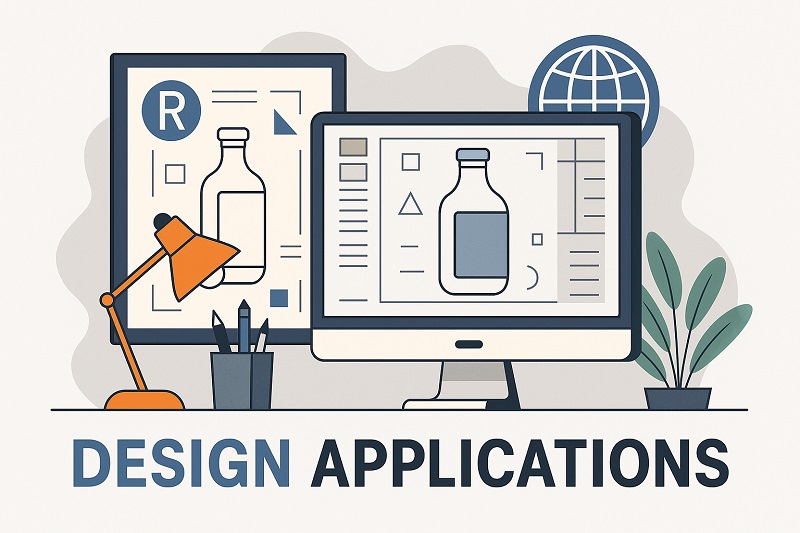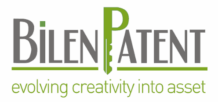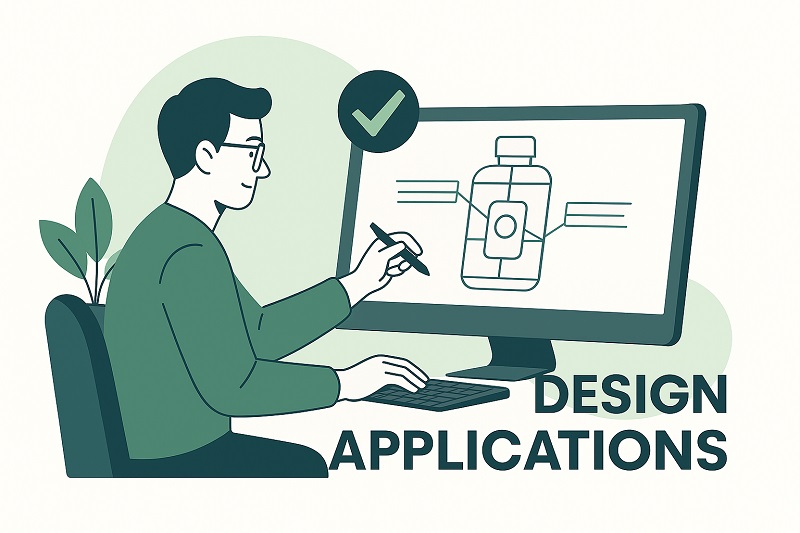In today’s innovation-driven economy, Design Applications have become an essential asset for companies seeking to protect the visual identity and user-focused functionality of their products. As markets grow more competitive and consumer expectations evolve, safeguarding industrial designs through formal Design Applications ensures both legal protection and commercial advantage.

Understanding the Role of Design Applications
Design Applications are legal tools that help businesses protect the outward appearance of their products, including shape, pattern, configuration, or ornamentation. Unlike patents, which protect functional features, Design Applications focus on the visual aspects that make a product appealing to consumers. This can include anything from the curves of a smartphone to the graphical layout of a software interface.
By securing your product design through Design Applications, you gain exclusive rights that prevent unauthorized copying, imitation, or use of your product’s aesthetic elements in the markets where registration is granted.
National and International Scope of Design Applications
For businesses operating in or expanding into Turkey, the national registration process is administered by TÜRKPATENT (Turkish Patent and Trademark Office). Through a local Design Application, companies can secure design protection within the Turkish jurisdiction for up to 25 years, subject to renewal.
For international reach, The Hague System offers a streamlined solution. By submitting a single Design Application through WIPO, applicants can obtain protection in multiple countries that are members of the Hague Agreement. This efficiency makes international Design Applications particularly valuable for exporters and global brands.
Why Design Applications Matter More Than Ever
With growing instances of design theft and counterfeiting, especially in sectors like consumer electronics, fashion, and automotive parts, the strategic importance of Design Applications has never been higher. Products with strong visual branding can be easily imitated, leading to loss of market share and erosion of brand equity.
By proactively filing Design Applications, companies can take enforcement action against infringers and counterfeiters, both in courts and through customs seizure measures. This acts not only as a deterrent but also as a foundation for legal remedies and financial compensation.
Key Markets That Rely on Design Applications
Many industries depend heavily on the strength and enforceability of their Design Applications. These include:
- Consumer Electronics: Devices like smartphones and wearables are defined by their sleek appearance and user interface.
- Furniture and Home Decor: Aesthetic appeal is a primary driver of consumer purchase decisions.
- Fashion and Apparel: Apparel, handbags, footwear, and accessories often compete based on design elements.
- Automotive: Vehicle parts and exterior elements are frequently copied.
- Software and UX/UI Design: Layout and appearance of applications can also be protected through Design Applications in many jurisdictions.
Strategic Benefits of Early Filing
Timing is crucial in Design Applications. Many jurisdictions follow a “first-to-file” system, meaning that the first party to submit a valid Design Application will secure rights over others. Delayed filing can result in loss of rights, especially if the design has already been disclosed to the public.
Additionally, early filing helps establish priority dates, which can be used to extend protection internationally within 6 months under the Paris Convention.

Design Applications and IP Portfolio Management
Design Applications should be part of a larger intellectual property strategy. An integrated IP portfolio not only enhances your company’s valuation but also supports licensing, franchising, and cross-border expansion.
Regular audits of your design assets, along with timely renewals and strategic filings, can maximize the value derived from your Design Applications. Many firms work with IP advisors to maintain a comprehensive design registration roadmap aligned with their business goals.
How Bilen Patent Supports Your Design Applications
At Bilen Patent, we offer expert guidance in preparing, filing, and prosecuting Design Applications both nationally and internationally. Our services include:
- Conducting prior art searches to assess novelty
- Preparing high-quality visual representations
- Filing through TÜRKPATENT and the Hague System
- Managing renewals and monitoring infringements
- Representing clients in disputes and enforcement actions
Our team has successfully handled hundreds of Design Applications across diverse sectors, enabling our clients to confidently enter competitive markets while protecting their design value.
Common Mistakes in Design Applications to Avoid
- Inadequate Visual Representations: Poor images can lead to rejection or narrow scope of protection.
- Late Filing After Public Disclosure: This may eliminate novelty and lead to refusal.
- Failure to Monitor Renewals: Missing deadlines may cause loss of rights.
- Lack of International Strategy: Failing to utilize Hague filings where applicable can limit global protection.
Avoiding these missteps ensures that your Design Applications are effective and enforceable.
Design applications begin with the creation of an original, aesthetically unique product element. This could include the shape, pattern, color, or configuration of a product that distinguishes it from competitors. Whether it’s a sleek bottle design or an innovative user interface, the design becomes an essential aspect of brand identity. By filing design applications, businesses gain exclusive rights to these visual features, protecting their competitive edge in saturated markets.
The legal framework surrounding design applications differs across jurisdictions, making it essential for businesses to navigate both local and international systems effectively. In Turkey, applications are filed through TÜRKPATENT, whereas for broader protection, companies can utilize The Hague System to register designs in multiple countries with a single application. Each system has its own procedural nuances and examination standards, which necessitate expert guidance to ensure success.
Successful design applications begin with a thorough novelty search. This step involves reviewing existing registered designs to confirm the uniqueness of the new design. If a design lacks novelty, the application may be rejected. Therefore, conducting a comprehensive search helps avoid unnecessary costs and delays. Intellectual property consultants play a vital role in this process, ensuring that design applications meet the novelty and distinctiveness requirements imposed by regulatory authorities.
Beyond filing, design applications offer companies a legal foundation to pursue enforcement against infringements. Once registered, a design holder can prevent unauthorized parties from producing, selling, or importing products that replicate the protected features. Legal enforcement often relies on the strength and clarity of the original design applications, highlighting the importance of strategic drafting and expert filing.
Another critical aspect of design applications is their integration into the overall intellectual property portfolio. Companies often align design protection with trademarks and patents to build a multi-layered defense system for their innovations. This holistic IP strategy amplifies brand value, deters competitors, and increases investor confidence—especially for startups and product-centric businesses entering new markets.
From a commercial perspective, design applications also serve as assets that can be licensed, sold, or included in mergers and acquisitions. By protecting industrial designs, businesses add tangible value to their brand portfolios. Investors and potential buyers view strong IP portfolios, including comprehensive design applications, as indicators of innovation, stability, and long-term profitability.
Technological advancements have further transformed the design applications process. Today, digital tools allow for 3D visualization, automated novelty searches, and streamlined e-filing systems. These innovations reduce the administrative burden and increase accuracy, making it easier for businesses to manage international design portfolios. Moreover, online databases provide real-time updates on design status, empowering applicants with greater transparency and control.
The significance of design applications extends beyond protection—they influence consumer perception and brand storytelling. Design is often the first feature that attracts customers to a product. A unique shape or form can create emotional connections, drive brand loyalty, and even become iconic over time. Companies that strategically manage their design applications are better positioned to capitalize on these intangible benefits.
In industries such as fashion, automotive, consumer electronics, and packaging, design applications are indispensable. These sectors are characterized by rapid product turnover and strong emphasis on visual differentiation. Timely and effective design applications help firms protect their seasonal collections, product updates, and limited editions from imitation, ensuring profitability and creative integrity.
Moreover, design applications are becoming essential in the digital economy. As user interfaces, app designs, and virtual products gain commercial value, protecting their aesthetic elements becomes critical. The expansion of design law into digital platforms signifies a broader recognition of visual creativity as a core business asset. Filing design applications for such intangible products allows businesses to stay ahead of copycats and secure a foothold in the emerging virtual marketplace.
For companies aiming to expand internationally, aligning design applications with global market entry strategies is vital. Each target market has different consumer preferences and design expectations. Customizing designs accordingly and securing protection through design applications ensures that businesses resonate with local audiences while maintaining legal safety nets.
Sustainability and eco-design trends also impact the field of design applications. Environmentally conscious consumers and regulators increasingly favor designs that reflect green values—such as minimalist aesthetics, reusable packaging, or ergonomic efficiency. Filing design applications for such innovations not only reinforces brand image but also supports regulatory compliance and corporate responsibility goals.
Training and awareness are integral to successful design applications. Companies must cultivate internal understanding among designers, engineers, marketers, and legal teams to identify which elements warrant protection. Workshops and internal IP audits help uncover valuable designs that might otherwise go unprotected. A proactive approach ensures that design applications are timely, accurate, and aligned with corporate strategy.
Working with a professional IP consultancy greatly enhances the success rate of design applications. These experts offer insights into international filing routes, manage documentation requirements, and provide enforcement support when needed. Their experience navigating the complexities of both regional and global systems ensures that design applications are comprehensive, enforceable, and cost-effective.
Ultimately, design applications are more than administrative procedures—they are a testament to innovation, craftsmanship, and business vision. In a world where aesthetics and functionality drive consumer behavior, protecting design assets has never been more critical. Companies that prioritize design applications not only safeguard their creations but also strengthen their market identity, legal positioning, and future growth prospects.
Final Thoughts
In an era where visual identity and brand aesthetics define commercial success, Design Applications have become a critical IP asset. Whether you’re a startup designing a new product or a global brand refreshing your portfolio, strategic design protection through well-executed Design Applications can provide the legal edge you need.
Don’t wait until imitation strikes — safeguard your designs with a forward-thinking IP partner.
Expanding the Scope of Design Rights: Practical Strategies for Businesses
In an increasingly innovation-driven economy, the visual appeal and usability of a product are no longer superficial elements—they are core components of commercial success. Businesses today are expected to differentiate themselves not only through technology or functionality but also through thoughtful design. As such, the strategic registration and management of industrial designs has become a critical component of a company’s intellectual property (IP) arsenal.
While patents safeguard technological inventions and trademarks protect brand identity, design rights offer a distinct and complementary layer of protection. They secure the visual characteristics of a product—such as its contours, patterns, and surface texture—thereby reinforcing the brand’s aesthetic value and consumer appeal.
Why Industrial Designs Deserve Greater Attention
One of the most overlooked yet powerful forms of IP, industrial design rights play a significant role in consumer decision-making. Products that offer a unique visual experience or ergonomic advantage often outperform their competitors in saturated markets. The design itself can evoke emotional connections with users, shape brand perception, and even influence purchasing behavior.
In industries such as electronics, furniture, automotive, fashion, and packaging, design elements can account for a large portion of the product’s market value. For instance, the sleek lines of a smartphone or the distinctive curvature of a car bumper may be the result of years of iterative design work—making it essential to protect those outcomes legally.
Global Harmonization of Design Laws: Trends and Impacts
With globalization, businesses increasingly seek protection for their designs in multiple countries. This has triggered a gradual harmonization of design registration systems. The Hague Agreement, administered by WIPO, enables applicants to file one international application to seek protection in over 90 countries, streamlining what was once a fragmented process.
At the regional level, frameworks like the EU’s Community Design system allow for unified protection across all member states. Meanwhile, countries like Turkey have aligned their national regulations with international standards, ensuring that locally registered designs can hold up in cross-border disputes.
However, differences in examination procedures, publication rules, and grace periods still exist among jurisdictions. Companies must remain aware of these nuances to avoid jeopardizing their rights. Working with experienced professionals who understand these subtleties is crucial to building a strong, enforceable design portfolio.
From Filing to Enforcement: Best Practices for Design Strategy
An effective design strategy begins well before filing. It involves identifying the elements of the product that are new, original, and commercially significant. While not all design aspects may qualify for protection, carefully selecting the most impactful visual features can strengthen the scope of rights granted.
Timely registration is equally important. In many jurisdictions, public disclosure of a design prior to filing may invalidate the ability to obtain protection. Therefore, internal IP protocols must be established to ensure that designs are documented and filed before any marketing or sales activity occurs.
Once registered, enforcement becomes the next frontier. Unlike patents, which are often complex and require technical analysis in disputes, design infringements are typically judged visually. This can work in the owner’s favor, as it is easier to prove unauthorized copying. Still, having clear documentation and high-quality representations from the outset is essential.
Design as a Business Asset
Forward-thinking companies treat design as more than a protective measure—they use it as a competitive advantage. Registered designs can be licensed or sold, opening up new revenue streams. In some cases, the value of a design right may exceed that of the underlying product, especially in fields like luxury goods or consumer electronics.
Moreover, design registration can enhance negotiation power during partnerships, mergers, or IP litigation. Investors and acquirers often look for robust IP portfolios as indicators of innovation and market resilience. In this context, industrial design rights add a crucial visual and commercial dimension.
Cross-Functional Collaboration: A Key to Success
Developing a resilient design protection strategy requires cross-functional collaboration among R&D teams, product designers, marketing professionals, and IP attorneys. Each party brings a unique perspective: designers understand aesthetics and usability, marketers gauge consumer preferences, while legal teams ensure enforceability.
This holistic approach helps companies avoid common pitfalls—such as overlooking the registrability of a design element, underestimating its market appeal, or failing to coordinate international filings. It also fosters innovation by encouraging feedback loops between design and business units.
Design in the Digital Era: New Frontiers of Protection
As digital interfaces become increasingly important, the scope of design rights has expanded beyond physical products. In many jurisdictions, graphical user interfaces (GUIs), icons, and screen transitions are eligible for protection. These digital designs not only improve user experience but also reinforce brand identity—making them valuable IP assets.
With the rise of virtual and augmented reality, design law is expected to evolve further. Protecting three-dimensional assets used in digital environments, including virtual prototypes and interactive displays, presents both opportunities and legal challenges. Forward-looking companies must start adapting their design strategies to embrace these new realities.
Design and Sustainability: The Intersection of Innovation and Responsibility
Modern consumers are placing more emphasis on sustainable and ethical design. Companies that embed environmental principles into their design processes not only gain public favor but also create long-term business value. Design registrations can cover eco-friendly packaging, modular structures, or recyclable components, ensuring that such innovations are protected and promoted.
Governments and funding agencies are increasingly recognizing this intersection, offering incentives for green design initiatives. Businesses that align their IP strategy with sustainability goals can access support schemes, build reputational capital, and gain early-mover advantages in emerging sectors.
Conclusion: Building a Resilient Design Portfolio
A successful design protection strategy is built on proactive planning, legal insight, and market awareness. It requires not only registering valuable designs but also integrating them into broader business and branding objectives. Companies that understand the strategic role of design rights are better equipped to lead in crowded markets, defend their uniqueness, and turn creativity into lasting competitive advantage.
Ultimately, while patents and trademarks remain pillars of IP strategy, design rights offer a vital and often underused third dimension. By leveraging them effectively, businesses can unlock new growth pathways and create meaningful differentiation in an era defined by visual and experiential innovation.
Only through careful planning, global awareness, and expert guidance can organizations maximize the true potential of their Design Applications.
Contact Bilen Patent today to start your design protection journey.

